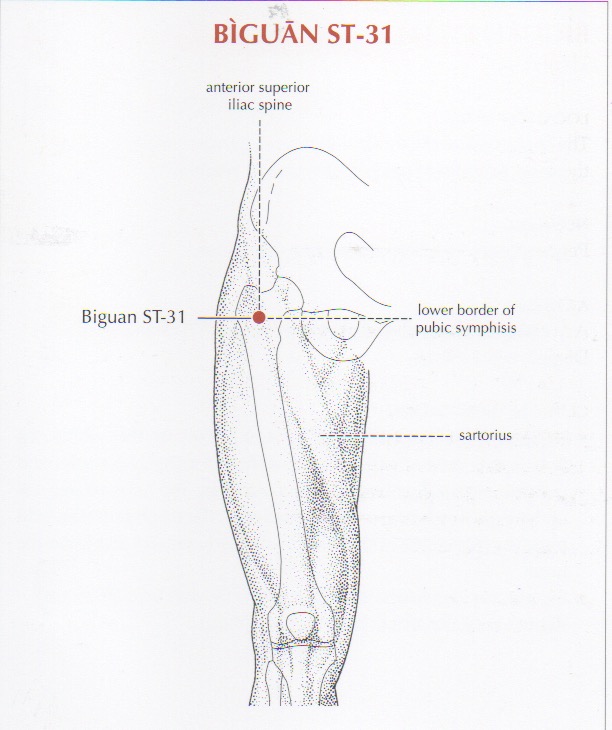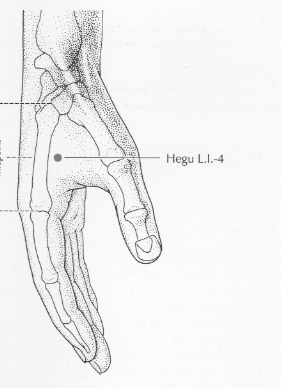Dry Needling vs Acupuncture 🥊
I get several phone calls/emails a day from people asking me about dry needling and how is it different from Acupuncture. So I’m writing this post to clear a couple of things up.
BUSTING THE MYTHS ABOUT ACUPUNCTURE vs DRY NEEDLING
Acupuncture isn’t mythical
But Unicorns are
The following myth statements are what physical therapists all over this country are telling you about acupuncture. Sadly, these words are being parroted by patients that either email me or call me, over and over again.
It’s time to bust those myths for once and for all.
Myth #1 Physical therapists treat PAIN and acupuncturists only treat energy.
I get it. You probably don’t know much about holistic medicine so you ask your doctor or physical therapist about acupuncture for your pain. But the problem with this is, you’re getting information about a service that they don’t do, and aren’t trained to do, therefore shouldn’t be your source of information about what acupuncture does in regards to physical pain.
So, here we go, you’re going to hear about it from an acupuncturist but first some history…
Over 2,000 years ago a group of people in China figured out that using needles somehow helped them reduce pain/anxiety/insomnia/improved digestion, etc.
I sincerely doubt these people had words like “fascia”, “posterior chain” and “saggital plane” and so on. All they knew was there seemed to be these lines of energy that criss cross and connect and when needled in a certain spot, people felt better. They had to name these lines something so they named them Foot Tai Yang and Hand Yang Ming and so on.
It wasn’t until the 70’s when President Nixon’s VP visited China and had emergency surgery to have his appendix removed, it was discovered he was allergic to general anesthesia. The hospitals in China use acupuncture regularly, so they used it to numb him for the procedure and it worked! Stunned and amazed he set out to bring Chinese Medicine to the states.
At the same time, China being a communist country, didn’t want its “secrets” of Chinese Medicine given freely to the western world. Eastern Medicine practitioners fled China to different parts of the world. One of them went to Canada and took on an apprentice.
This apprentice renamed the Foot Tai Yang, Hand Yang Ming, etc, meridians to Liver, Gallbladder, Kidney, Lung, Large Intestine as a way for western practitioners like myself, to be able to memorize the information. I think this is what leads people to believe that acupuncturists are somehow taught “magic.” It’s not. It’s just primitive. But just because it’s ancient medicine, doesn’t mean it doesn’t have value. It would be gone if that was the case.
The founder of the school I attended, Tri-State College of Acupuncture, introduced his own style of acupuncture based on the work by Dr. Travell, President JFK’s Doctor. Her work on locating and cataloguing trigger points was combined with Traditional Chinese Medicine and other styles to create Acupuncture Physical Medicine. This is the main style I practice.
Fact:
The fact is, when a needle is inserted into the body, a physiological change happens every single time. The body returns to homeostasis (or yin and yang are back in balance) allowing your body to heal itself. Whether it’s a muscle that releases or your insomnia gets better, there’s always going to be some positive change with acupuncture.
It’s simply a language barrier that differentiates us from physical therapists (when we’re talking about needling).
Myth #2
Physical Therapists study anatomy, Acupuncturists only study meridians
Fact:
Acupuncturists need to meet certain western biomedical standards in order to practice. Among them are biology, anatomy, myology and pathophysiology along with Eastern Medicine. Acupuncture, after all, is an invasive procedure requiring the insertion of needles. We have to be well versed in what we’re needling into. And yes, of course, we also study meridians.
Myth #3
Dry needling needles into muscle and acupuncture doesn’t.
“X” marks the trigger point that refers pain to the front of the knee.
ST 31 is an acupuncture point on the stomach meridian, used to treat knee pain that occurs in the front of the knee.
As I mentioned before, hospitals in China utilize acupuncture regularly. I wish I could show you the videos of how deep they needle into the body. I won’t, because I know it’ll just scare you.
I needle all the way down to bone at times. I also release trigger points except that in eastern medicine, we have a different name for trigger points- we call them ashi points.
In these illustrations, you can see how the trigger point (that’s the X mark) that refers pain to the knee is almost identical to acupuncture point 31 on the stomach meridian. Both are indicated to treat knee pain. There are many more points like this on other meridians.
So you see, acupuncture does treat pain and does a great job of it.
Myth #4 Dry needle and acupuncture are not the same thing.
Fact: That statement is both right and wrong.
Acupuncture can be and is dry needle
-because of the solid filiform needles we use (they are literally dry needles, there isn’t any fluid going in or out of it)
-Acupuncturists needle, at times, deeply into muscle releasing trigger points or stimulating motor points
Dry needle, when performed by physical therapists, could never be acupuncture.
There is a lot more going on in an acupuncture treatment than just releasing tight muscles. Acupuncturists, treat the whole person, not just a leg or an arm.
I blame insurance companies in America for how our healthcare system is set up. PTs have a lot to offer their patients but they have their hands tied by the insurance companies forcing them to have to see a lot of people per hour. If you feel you need or want help with a structural issue, seek out a PT in private practice, they’re worth the investment.
I highly doubt that physical therapists are going to stop needling, they’re doing it because it works. But, I do believe the amount of hours they spend learning dry needling is about to get a lot more regulated. Acupuncturists have thousands of hours invested in education versus PT’s taking a weekend course. Just recently, a Florida court ruled that PTs are not allowed to do dry needling, it’s currently illegal in NYS and NJ.
There is so much more that acupuncture can do for you than just releasing a trigger point. There’s a reason that trigger points happen in the first place, stress, overuse of a muscle or joint, a traumatic event, blood or yin deficiency (which is basically how eastern medicine views tights muscles- as a lack of fluids in the body). Receiving treatment by an acupuncturist, is also a better experience all together. The environment is usually very relaxing, the practitioner isn’t in a rush to treat 5 other patients in the same hour, they aren’t passing you off to a bunch of staff members that don’t even know you’re name as well as some other stuff like herbs, cupping, gua sha and tui na- all part of a wholistic way of treating you since you are a whole person and not just a body part.
I hope this information was useful and helped you, as a person in pain, to understand why seeing an acupuncturist, especially one like me that specializes in sports medicine, is a much better choice (when it comes to needles).Comments I get 100% of the time when it comes to comparing my needle work to that of a physical therapist, is usually along the lines of “I get so much more out this than seeing the physical therapist” (regarding needling) or “This was a much better experience than getting dry needling by my pt”
My goal here was just to inform you of the differences between the two so that you can make the best decision about needling for yourself and when talking about it to your friends and family.
If you’re reading this and you’re not in NYC and can’t see me, but want this kind of needling, I recommend you search for an acupuncturist in your area and call them and simply ask, ‘Do you do trigger point or motor point work?’, because if they do, they are the right acupuncturist for you to see, they are pain specialists.
Eastern Medicine is WHOLEistic and
acupuncture is the original dry needle.
To schedule your healing session, click below









